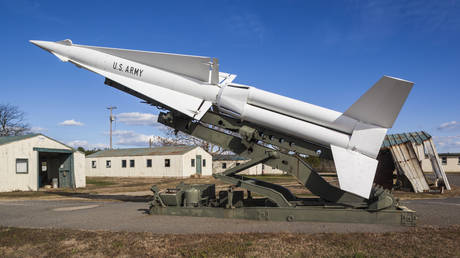ARTICLE AD BOX
TURNBERRY, Scotland — The United States and European Union struck a trade agreement on Sunday locking in a 15 percent tariff, days before Donald Trump’s deadline to do a deal or face tariffs double that level.
Trump, speaking after meeting European Commission President Ursula von der Leyen at his Turnberry golf club in Scotland, announced the deal to U.S. reporters.
“This is the biggest one of them all,” Trump said after a meeting that lasted around an hour.
Von der Leyen, who flew in at short notice to meet Trump, said: “It was heavy lifting we had to do. But many thanks also for the talks we had many times on the way to our goal — but now we made it.”
Trump, reading from a paper, said the EU will agree to purchase $750 billion of energy. It will also agree to invest $600 billion more than planned in the U.S.
The tariff rate applying to imports from the EU would be 15 percent. Von der Leyen, speaking at a later news conference, said this would be a ceiling, with the same rate applying to cars, pharmaceuticals and semiconductors. The tariff treatment for alcoholic beverages has still to be worked out.
Europe would replace Russian gas with purchases of energy from the U.S. with purchases of $250 billion per year for the rest of Trump’s term, she added.
Trump also said that steel and aluminum would continue to be subject to 50 percent tariffs. Von der Leyen said Washington and Brussels would work together to create a ring fence to address global overcapacity.
The talks followed a two-week standoff triggered by Trump, who in a letter to von der Leyen threatened to jack up tariffs on most EU goods to 30 percent if no deal were done by Aug. 1.
In a first sign that a breakthrough had been in the offing, von der Leyen announced Friday she would fly to meet Trump in Scotland, where the U.S. president was on a private visit.
Escalate to de-escalate
Trump’s escalation had stunned EU trade negotiators, who had been led to believe by their U.S. interlocutors that a preliminary deal was within reach.
A battle of nerves ensued, as Trump announced a string of other deals — including one with Japan that set a baseline tariff of 15 percent while offering relief to its auto industry. Some observers saw that setting a benchmark.
 Ursula Von der Leyen had earlier stressed the significance of the $1.7 trillion transatlantic trade relationship. | Andrew Harnik/Getty Images
Ursula Von der Leyen had earlier stressed the significance of the $1.7 trillion transatlantic trade relationship. | Andrew Harnik/Getty ImagesAt the same time, the 27-nation bloc activated its trade countermeasures, drawing up a list targeting €93 billion in U.S. goods — ranging from aircraft to autos, and from soybeans to Kentucky bourbon — that would face retaliatory tariffs of up to 30 percent. Those were due to enter force from Aug. 7 onward, absent a deal.
Von der Leyen had earlier stressed the significance of the $1.7 trillion transatlantic trade relationship — the world’s largest — and appealed to Trump to do the biggest deal that either of them have ever done.
Speaking afterward, she said: “The two biggest economies should have a good trade flow between us. I think we hit exactly the point we wanted to find. Rebalance but enable trade on both sides. Which means good jobs on both sides of the Atlantic, means prosperity on both sides of the Atlantic and that was important for us.”
Unity and friendship
Trump, who said earlier he was in a bad mood, declared himself satisfied with the outcome.
“It’s going to bring a lot of unity and friendship. It’s going to work out really well,” Trump said. “This was the biggest of them all.”
Von der Leyen was joined in Turnberry on Sunday by Trade Commissioner Maroš Šefčovič while, on the U.S. side, Commerce Secretary Howard Lutnick flew in for the first top-level bilateral trade talks since Trump imposed sweeping tariffs on the rest of the world in April.
Lutnick told reporters that the result of an investigation into the semiconductor industry, which could lead to new sectoral tariffs being imposed, was expected in around two weeks.
Agreement with the EU proved harder for Trump’s team to reach than with Japan and a handful of other nations — reflecting the bloc’s economic power as a market of 450 million consumers.
The way the EU handles trade policy — with its executive Commission negotiating on behalf of, and having to consult with, the bloc’s 27 members — also hampered Trump’s swashbuckling style of dealmaking that has taken a wrecking ball to the multilateral trading system of the post-World War II era.
While the EU never got as far as implementing its retaliatory tariffs, or activating its “trade bazooka” — the Anti-Coercion Instrument — these exerted a deterrent effect through their potential economic impact on voters in Republican heartland states and on U.S. industries with lobbying clout in Washington.
No joint statement or deal text was immediately published. One person close to the European negotiating team said it would be vital to stabilize a written agreement as soon as possible.
The Commission was expected to brief EU ambassadors on the trade deal in Brussels on Monday, said a spokesperson for the Danish presidency of the Council of the EU, the bloc’s intergovernmental branch.
This story is being updated. Additional reporting by Daniel Desrochers, Doug Palmer, Jordyn Dahl and Gabriel Gavin.
.png)
 1 month ago
5
1 month ago
5








 English (US)
English (US)